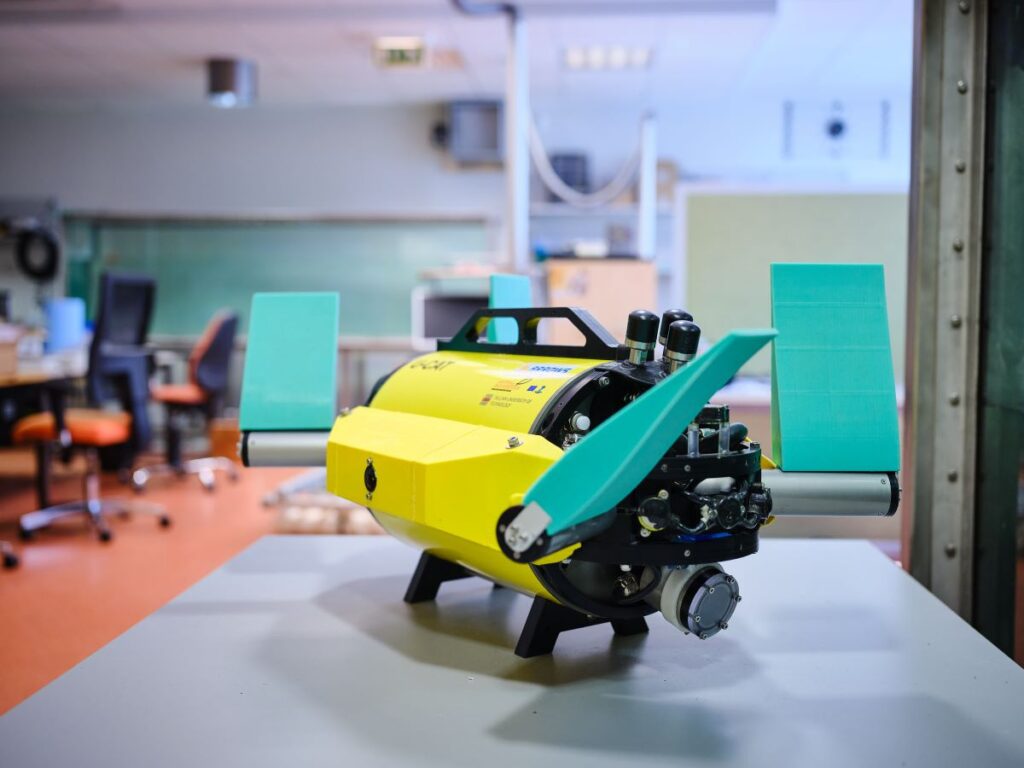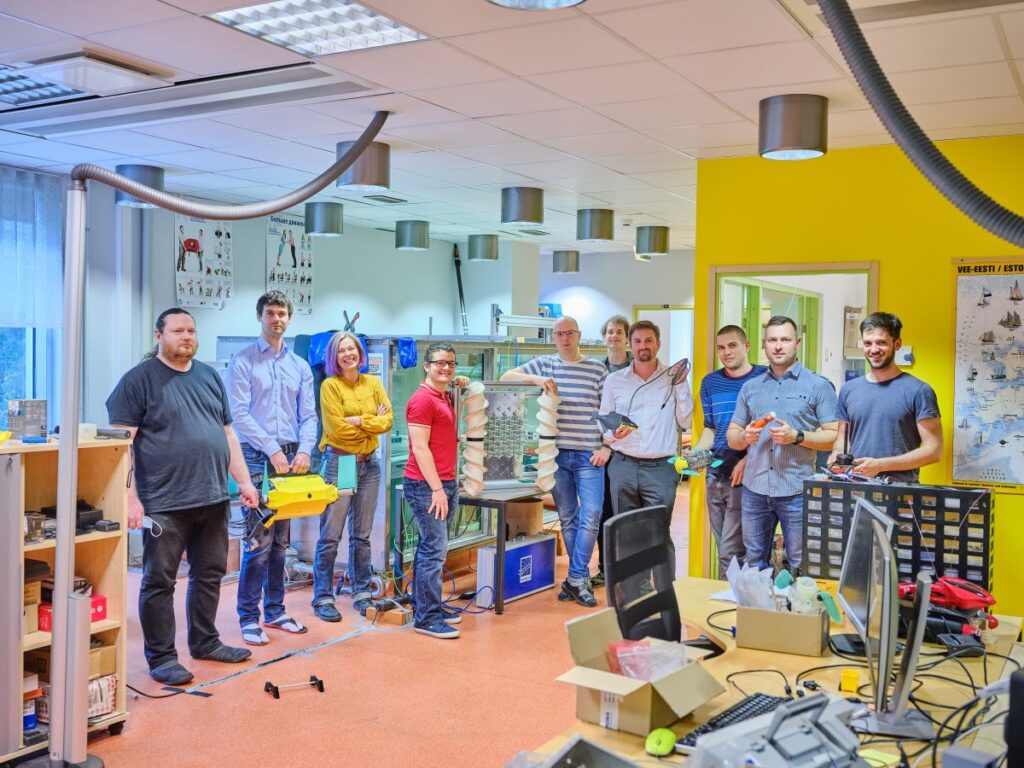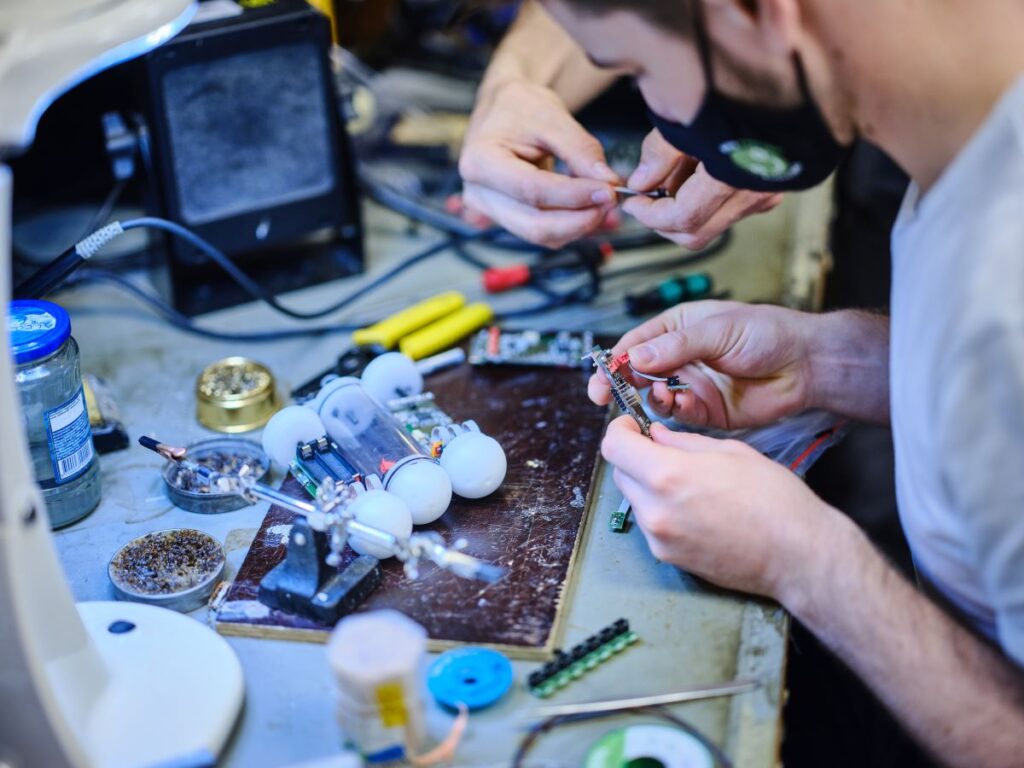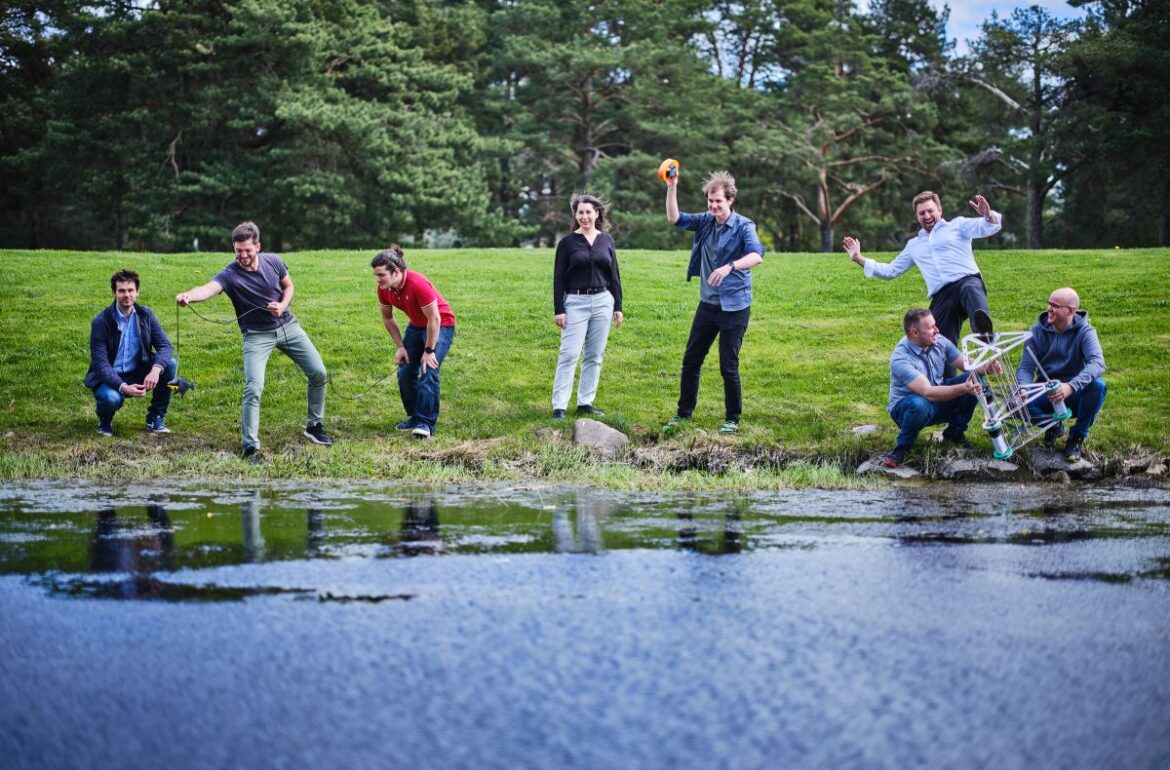Estonia has one of Europe’s top 15 research teams. Professor Maarja Kruusmaa and her team’s research is one of the most expensive in the field. Among artificial intelligence, there is no niche that is more volatile than underwater robotics.
Drones that fly in the air have become commonplace and even children can have fun with them, but the underwater world is much more complicated, so it’s no surprise that we can’t just buy a robot or a drone to explore the seabed with from a shop yet. Professor Kruusmaa and her research team are working hard to make this a real possibility.
The approximate quantity of water on Earth is 1.34 billion cubic kilometres. 97% of this is seawater located in our oceans. Estonia has approximately 25,000 square kilometres of territorial sea and plenty of inland water bodies. We can dive and snorkel, but very few of us can explore the deep sea. Humans meet the limits of their physical capabilities at a certain depth. In order to explore the sea, protect it and reap its benefits, we need solutions that can do it all autonomously, without the need for a human body or even a brain. Why is the latter important? Because no means of communication works deep underwater. It is impossible to give regular control commands.
First, Kruusmaa explains that in order to test the underwater robot, they develop new algorithms with mathematicians to see whether the robots become more mobile and fault tolerant. The robot that moves autonomously as programmed will be the practical result of their work. Achieving this is time-consuming and expensive. “Reliability in this context means that there needs to be as low of a chance as possible that the software will not operate,” she explains. “This is rather difficult to achieve underwater.”
With conventional IT systems and electronic solutions that are used for conventional robots, a lot of trial-and-error experimentation can be done, but we can’t do that underwater. It is both expensive and time-consuming. Kruusmaa compares this process to that of building a house, where in a similar way you cannot just start putting materials together without ensuring beforehand whether the building is going to collapse or not.

“In underwater robotics, we have to do field tests. The fault tolerance must be perfectly considered beforehand. We operate at a centre of excellence, where we conduct basic research. For example mathematical algorithms. We simulate everything in order to make sure that the robot works as it is supposed to in all possible scenarios,” says the leader of the research team.
Kruusmaa brought this topic to Estonia
There aren’t many research teams in the world that could have reached such high capability, because underwater robotics is a field that requires a lot of financing. Kruusmaa says that this cannot be achieved overnight. This kind of capability is not created based on a couple of individuals. It requires infrastructure and several scientists who can do technical engineering work. Maarja Kruusmaa states there are 15 such research teams in Europe who are also up to the required standard at the international level. “We communicate a lot with each other.”
How did it happen that one of these centres of knowledge and development in this field is situated in Estonia? Kruusmaa herself is one of the reasons, she made this field relevant. In addition, Estonia is a maritime nation. “Our coastal sea has different conditions when compared to deep oceans,” she explains. “Several technical problems arise here as well. There are shallow waters, low visibility, low-temperature climate, sediments – shallow water is an unstable environment. Waves and currents. Underwater robots have different challenges over here.”
If the robot vanishes, then it’s gone for good
Why is developing underwater robotics more expensive than terrestrial artificial intelligence? The robot has to be water proof, but it’s also important that the robots can be used in locations where they can’t be reached. If something should happen, then it might stay at the bottom of the water – somewhere it can never be reached. As Kruusmaa says, once the robot is let loose, they have to hope it comes back. As there is no Wi-Fi or any other smart solution underwater that can be used to communicate with the robot, there is no way to monitor it. “If the robot does not return, then you lose all the data,” says Kruusmaa.

The water-resistance needed is not comparable to how a drone flying in the air must be able to endure rain. There is pressure underwater, and if at all possible, the water will leak in. Kruusmaa says there’s no need for witchcraft, but the solutions are going to cost money. There is another difficult aspect – electromagnetic waves cannot travel through water very well. Whether that’s Wi-Fi, radio waves or GPS. If you want to communicate with the robot, you can only do so with a cable. However, that means the robot cannot go too far.
“If you remove the cable, then the robot is 100% autonomous,” says Kruusmaa. “You must build a robot that can be completely autonomous. It must be able to move from one place to another without GPS coordinates and maps.”
Even operating a cable-connected robot is not that easy. The user interface needs to be good. You might not even see the drone once you place it underwater. Operating this is not intuitive and it takes a long time to get used to.
Collaboration with two top scientists
Kruusmaa’s research team works closely together with two of EXCITE’s principal investigator. They’re working alongside Ülle Kotta on the topic of fault tolerant control algorithms. Kruusmaa states that Kotta brings the base knowledge as a mathematician, while Kruusmaa’s research team brings the applicational element. “We have the robots and the know-how regarding building and testing. Ülle has the knowledge in describing them mathematically and proving that they work as discussed,” she explains.
The second project is a collaboration with Jaan Raik, who is a professor of fault tolerant systems. Together, they rack their brains on the topic of underwater sensors and sensor networks that have to collect data underwater. This collaboration must result in a software system that understands when a sensor is not functioning properly. It has to detect errors. “We need to simulate it so that the data received using sensor networks is credible. Additionally, we need to understand when the sensor network is so poor that it no longer functions,” Kruusmaa illustrates.
Underwater robots will drastically change things
We now get into the practical uses of these types of robots. On the one hand, any type of underwater work requiring manpower is often both expensive and dangerous. Underwater welders make a lot of money, as do divers who dive in dangerous locations. The hazardous nature of this type of work is a factor.
But there are places even a professional and experienced diver would never go. For example, the dangerous and unknown interiors of shipwrecks or locations residing under port structures. If there is a significant threat to human life, they will not go. The same issue occurs with jobs that need someone to traverse long distances or go extremely deep underwater. An underwater robot can traverse from the West Coast of Scotland to Newfoundland, all the while collecting data. A human is not able to accomplish that. “They never will be,” says Kruusmaa. “There is no use in making a person do such work.” Therefore, underwater robots could be used for a lot of work already being done underwater, while adding even more possibilities.
For example, these robots could be used for environmental monitoring. They could continuously monitor our coastal waters – the quantity of microplastics, the proliferation of cyanobacteria, fish spawning grounds and pollution.

We could even talk about using them to look out for criminal activity. The underwater robot could successfully scope out all the ships coming into a port to ensure that drug dealers have not attached any packages to the underwater sections of them. It would be time-consuming and expensive for a diver to perform such a task. The robot would be able to perform this on every ship that arrives at the port.
“Therefore, it can be said that while people won’t feel the benefits of underwater robots in their own wallets, the world would indirectly become a better and safer place,” believes Kruusmaa.
Underwater drones in shops
A regular person can still see one of the developments that underwater robotics is striving towards. As robots become faster and can traverse longer distances, the components and robots themselves are becoming smaller. They need to be managed in a different way, and we need to think about how they can remain stable underwater so that currents and waves do not wash them away. These types of breakthroughs make it so that current large and expensive underwater robots become smaller and less expensive. If the price of the components decreases, they will become accessible to regular people.
“10–15 years ago, flying drones were extremely expensive and only available to the military. Even a couple of years ago, it was not feasible that the owner of an expensive yacht could purchase a robot, throw it in the water and then use it to see what is happening under the keel. We are reaching a stage where underwater robots can be bought by middle class mothers as a Christmas present for their child,” Kruusmaa points out. She notes that they will not reach the price point of flying drones, but there is still a trend towards significantly lower prices. “You will soon be able to buy them from supermarkets” she believes.

This also means that interest regarding the production of underwater robots is growing. However, the private consumer market in this field will most likely be unstable, as it is with all sorts of gadgets – they are trendy at one point and then they go out of style. On the professional market, it is more sensible to operate as both a manufacturer and a seller. Companies will not conduct themselves irrationally, because their success relies on increasing effectiveness and mitigating risks.
Collaboration with companies
The professor doesn’t feel that there’s a problem in top research not being directly funded by companies. Why should they take on that risk? Her research team in the field of underwater robotics is funded primarily by taxpayers in the European Union. Estonia’s contribution is extremely small.
Kruusmaa explains that their research team still works on basic research, which means that it will take several years before the robots become available to use – years of research, tests, errors and learning from those errors.
“The interest from companies comes along at a later stage,” she says. “It is true that we are testing sensor networks in the port of Sillamäe. There are a lot of interested parties there. There are a lot of interested manufacturers as well. Robotics is more challenging. I do not know of anyone in Estonia who is building smaller robots right now.”
Their installation has existed in the port of Sillamäe for many years. During this time, the system has malfunctioned once, but Kruusmaa finds a positive in every situation – the purpose of testing is that when something breaks, it must be rebuilt.
In the end, the robots will be built by engineers, who will have received the necessary knowledge from researchers. Kruusmaa states that there are two ways in which her research team’s discoveries reach the rest of the world. The first of those are scientific publications, which can be read by anyone and applied to building better robots. The second is when knowledge leaves with a departing member of the research team. “From a laboratory to a company. Several brilliant minds have left us just like that,” she says.
The main thing that makes the Estonian underwater robotics research team unique is that the Centre for Biorobotics researches biology-inspired robots. Different types of technologies are applied. There are also shallow water applications that are often even more complex than the deep water ones.
It is clear that working in a complex and expensive environment can greatly change the way we get knowledge regarding our seas and lakes. Additionally, thanks to Kruusmaa and her research team, at some point we will find beautiful photos and videos from the deepest waters on social media instead of cat photos – the underwater world is still mysterious and unknown to many of us right now.
The article was first published in the Estonian Centre of Excellence in ICT Research (EXCITE) magazine and by Tallinn University of Technology.
 Back
Back



